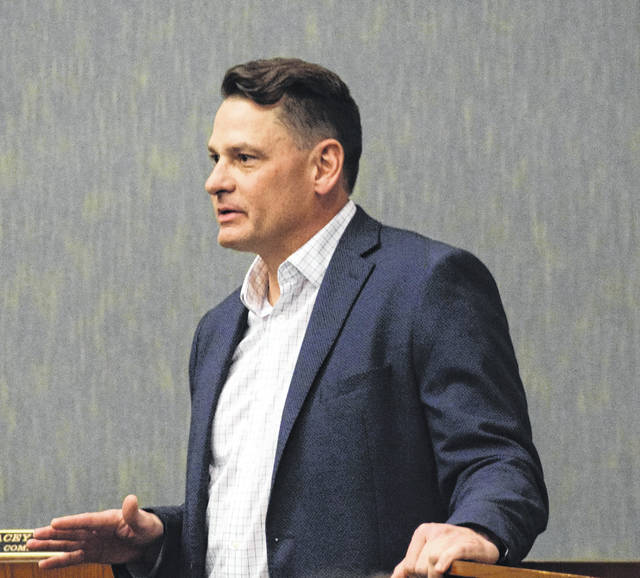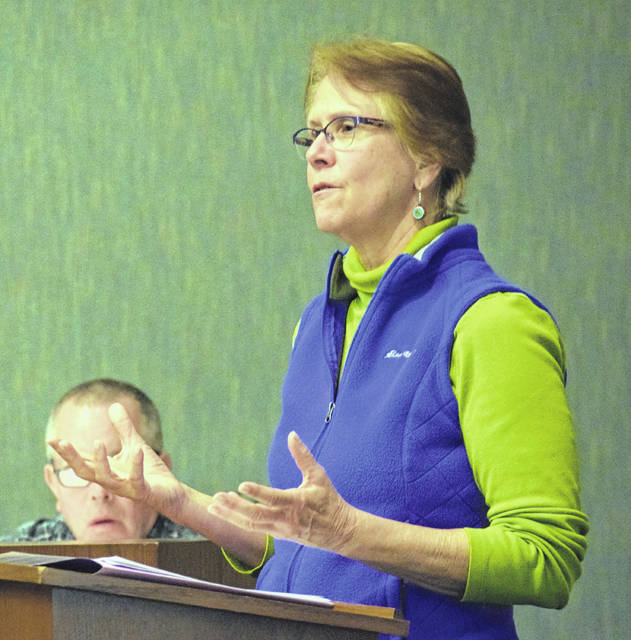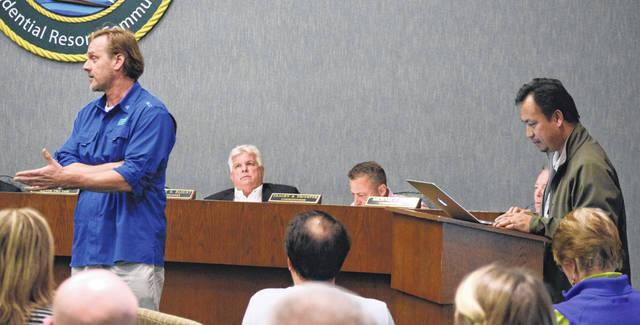WHITE LAKE — Residents and property owners joined the board of commissioners in listening Tuesday to what researchers have discovered about the water quality of the lake.
“We have asked everyone here tonight to educate us on what is going on,” said Mayor Goldston Womble.
Presenters included Dr. Diane Lauritsen of Limnoscience, Dr. John Holz and Tadd Barrow of HAB Aquatic Solutions, Dr. Chris Shank of Bald Head Island Conservancy and Dr. Peter Zamora from UNC Wilmington.
Lauritsen shared that there are two lake level gauges for measuring.
“One of those lake level gauges is located on the Goldston’s Motel Pier,” she said. “There’s another lake level gauge over by the state parks property, but that one is really hard to access. Some people don’t even know that it is there. But if you are ever interested in taking a look at the levels or sending the information to the state they are actually able to remotely measure lake level using satellite data. They want people to text in the lake level so they can add that to their data set.”
That information would allow them to measure the effect of precipitation and other changes are on the lake.
Chris Shank, executive director of the Bald Head Island Conservancy, explained that when the lake levels lower, it releases some of the pressure allowing more groundwater to come up into the lake.
“We have just about wrapped up the groundwater study,” he said.
They also did a late January sampling and they are still waiting on data from that.
“There are a lot of nuances,” he said. “It’s complicated. There’s not a river that runs into the lake.”
For Shank it was a mixture of finding out not only what is flowing into the lake, but what is flowing out of the lake.
“We have to isolate what exactly is getting into the lake and how much is getting into the lake,” he said.
Dr. Peter Zamora, an assistant professor with UNC Wilmington, showed a map and explained how the water came into the lake and how it flowed out.
“Going around the shoreline and putting in wells give you a sampling of potential water levels in that particular spot,” said Zamora. “It doesn’t give you the whole picture.”
The lake level has also significantly lowered since the outflow has been opened up.
John Holz, with HAB Aquatic Solutions, performed the alum treatment last year.
“White Lake is like your checking account,” he said. “When you get to the end of the month and you don’t like how your checking account balance look, you start to look and find out where your money went.”
Hydrilla, which is known as the “world’s most invasive aquatic plant,” has also been found in the lake, and can be difficult to remove and control.
In 2016 town officials requested testing after swimming in the lake was attributed to an outbreak of rashes. According to what was reported to the commissioners later in August that year, the water was said to be of “excellent quality.”
Clarity issues go back to 2013 when residents started to take notice, leading to the involvement of the N.C. Department of Environmental Quality. This showed the increasing pH and blue-green algae, which feeds primarily off of phosphorus, which increases pH.
That study was presented in 2015.

Dr. John Holz of HAB Aquatics talks about the alum treatment that was performed last year.

Presenter Dr. Diane Lauritsen of LIMNOSCIENCE explained about the pH levels and the lake and the causes of the algae and growths of invasive species like the hydrilla.

Dr. Chris Shank (left), executive director of Bald Head Island Conservancy, and Dr. Peter Zamora, of UNC Wilmington, both spoke about how the water gets into the lake and the effects of the underground water system.

